When I bought the house it was covered in white vinyl siding; the yard consisted of dead grass and broken bottles. The sole survivor was a surprisingly virulent holly that covered the front yard in perpetual shade. I could live with vinyl siding much longer than I could stand an unattractive landscape. And so, joined by landscape designers Charles Price and Glenn Withey, we attacked the yard. After the white siding was removed and the fall palette introduced, our first planting scheme gave way to a more sophisticated one that suits the house as it is now.
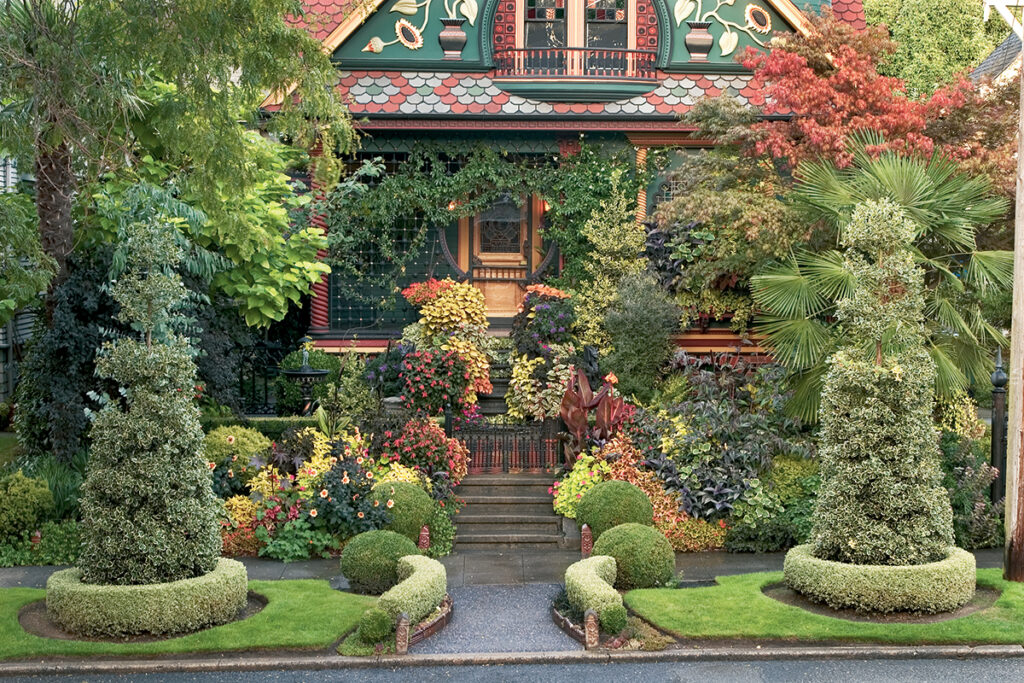
Quite a scene: curb, sidewalk, slope, lawn, stoop, then porch, all decorated with plants to complement the whimsical house. Two conical hollies anchor the front garden, along with balls of boxwood and a dwarf-boxwood hedge. 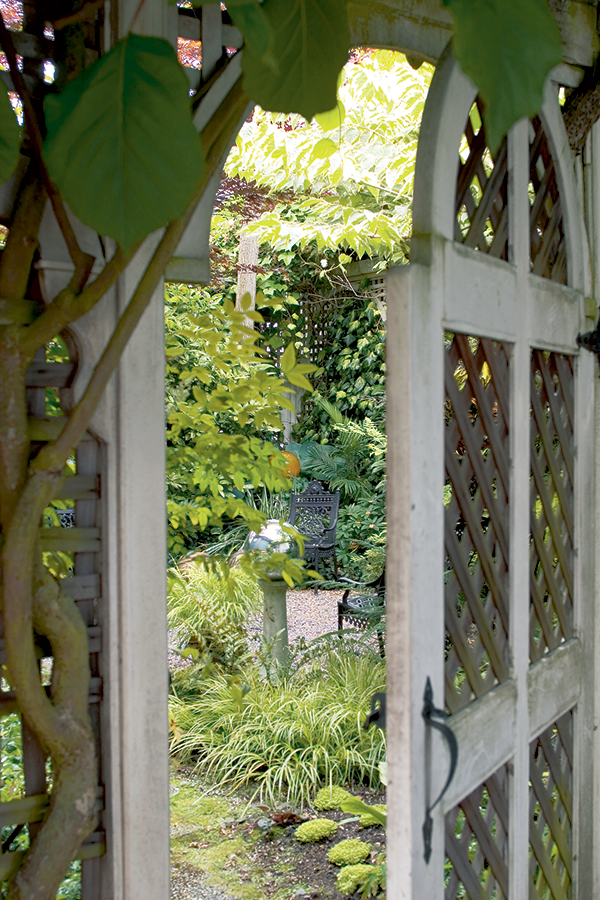
An arched lattice encloses the private yard. 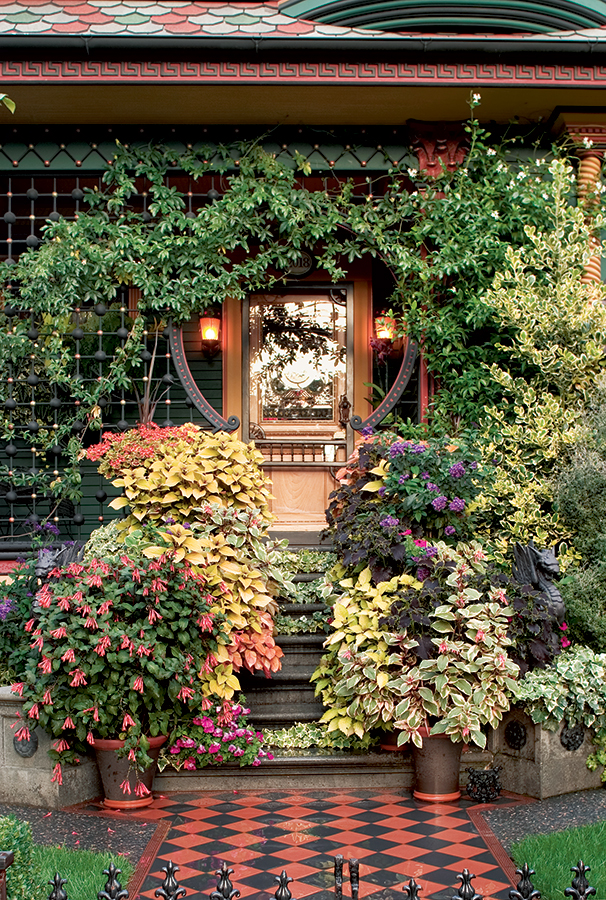
English geometric tiles set in mortar lead to the front-porch entry. 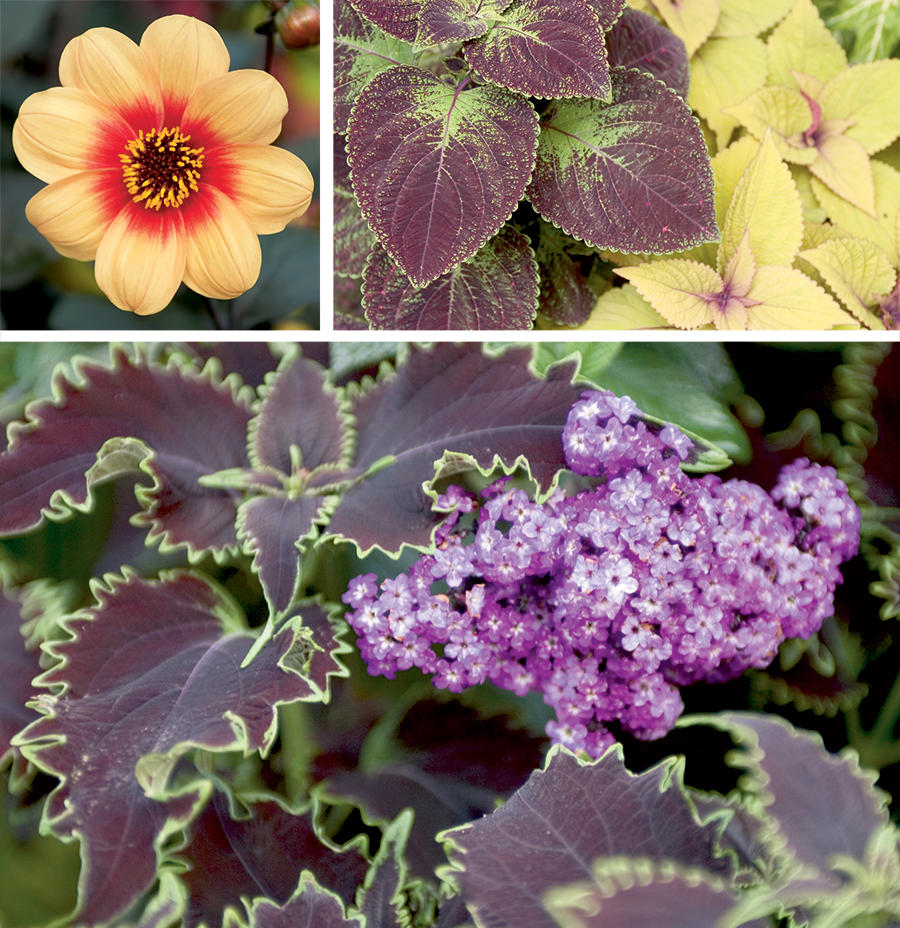
Top left: Dahlia ‘Moonfire’.. Top right: Assorted coleus on the slope. Bottom: Heliotropium arborescens with burgundy coleus (in a pot). 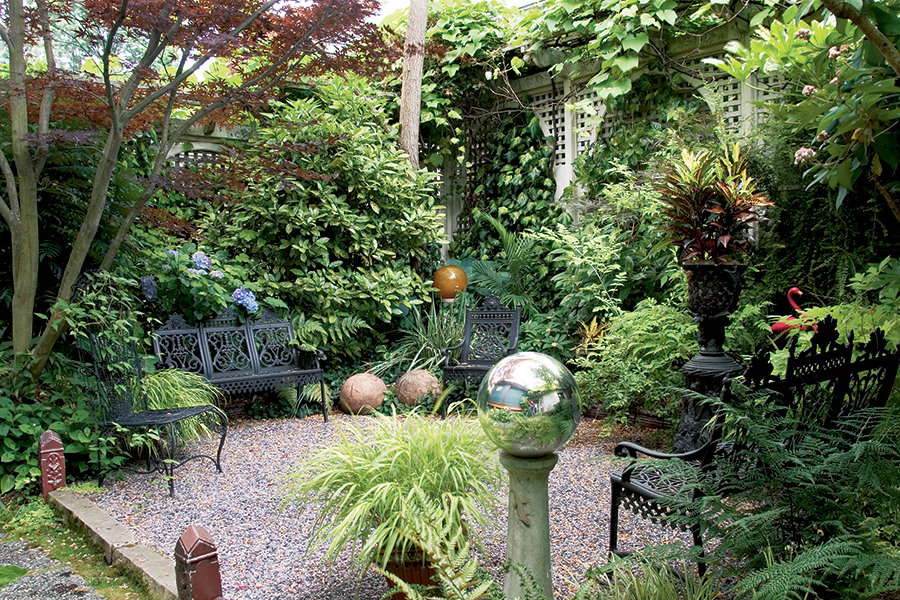
The backyard is a serene shade garden. Spiky Iris foetidissima ‘Variegata’, Rubus cockburnianus, and Aucuba japonica provide a pleasing backdrop for terra-cotta balls and iron furniture.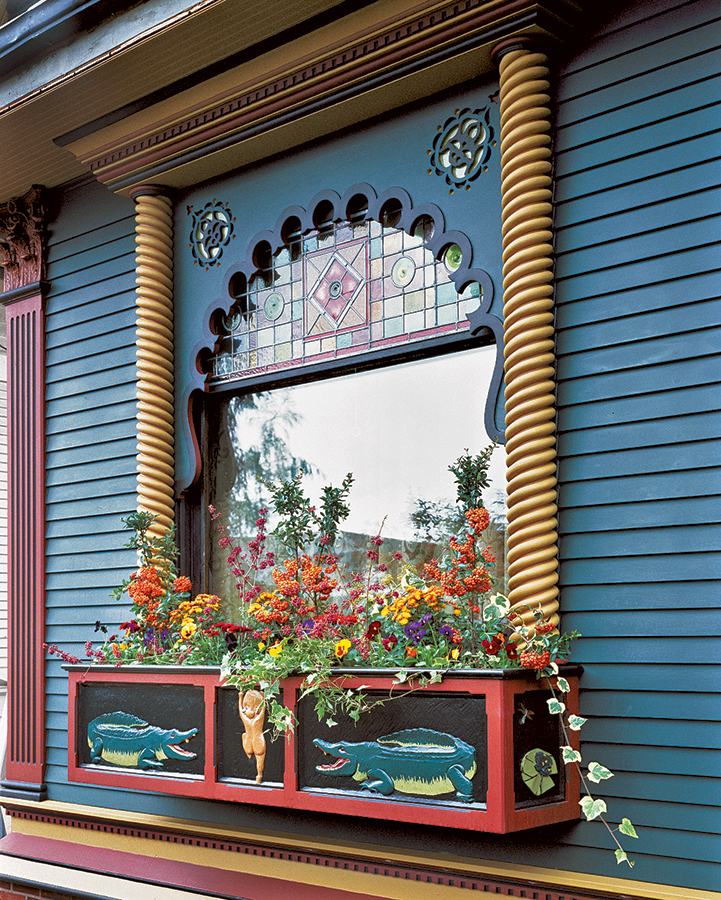
The carved crocodiles and baby inspired by a motif at Cardiff Castle are visible in this earlier photo of the window box.
Variegated English holly trees (Ilex aquifolium) have been pruned into conical accents. Seattle was built on a series of hills, and many of its homes had front-yard slopes for planting, often later replaced with low-maintenance rock gardens or walls. I chose to keep my front slopes intact as planting beds. We created a scheme of admittedly high-maintenance, seasonal plantings. Fall and spring are nice with winter pansies and a few bulbs, but the yard is in its prime during the summer, when we plant it out in vibrant swaths of color.
The narrow side yard on the north, which never sees direct sun, was planted with hostas ‘Halcyon’ and ‘Regal Splendor’, both relatively bug-proof. Different evergreen and herbaceous ferns as well as variegated Persian ivy fill in the planting beds alongside the house. I gave up trying to keep a lawn alive in the backyard shade and replaced it with a more practical ellipse of colored gravel bordered with antique clay edging tiles.







